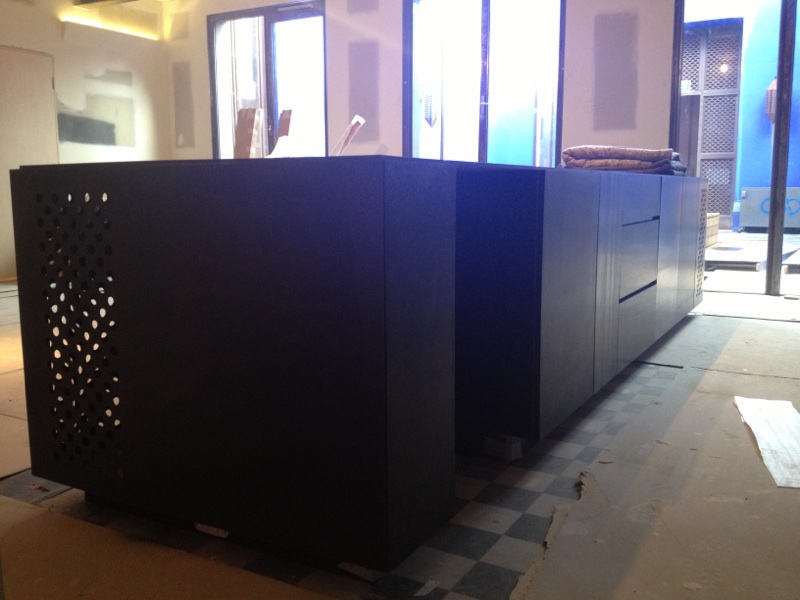
Explore architectural blackening by Alpha Detroit. Servicing all of Australia and New Zealand, dive into its beauty and protective benefits. Call 03 9555 3682.
Steel is renowned for its durability and strength, making it a preferred choice for large-scale architectural projects. These colossal steel structures not only serve functional purposes but also often stand as iconic pieces of art. Over time, however, they may still get damaged due to outdoor elements, wear and tear, and so on. To protect and enhance these structures, they must be subjected to the process of architectural blackening.
The Principles of Architectural Blackening
Architectural blackening is a surface treatment process that transforms the appearance of steel, giving it a sleek, matte-black finish. This technique serves as a protective measure and can add an artistic dimension to large-scale steel architectural designs.
The process of architectural blackening is done in several steps. Before applying the blackening solution, the steel surface should be thoroughly cleaned and prepared to ensure the best adhesion and finish. After surface preparation, a chemical solution is then applied to the steel. This solution, which is often based on acidic compounds, interacts with the iron in the steel to create a controlled oxidation process, forming a blackened layer on the surface.
Once the steel has achieved the desired level of blackening, it is rinsed to remove excess chemicals. A neutralising agent may be used to stop the oxidation process. The steel is finally dried and, in some cases, sealed with a protective coating to preserve the finish and prevent rust or further oxidation.
Primary Benefits and Versatile Applications
Architectural blackening offers tons of benefits to architectural projects.
First, it can impact a sophisticated, industrial look to structures, adding a timeless and artistic touch. It also adds a protective barrier to materials, reducing the risk of corrosion. This process likewise minimises the need for maintenance. The whole process of architectural blackening is sustainable and eco-friendly as it only uses fewer chemicals and produces fewer harmful byproducts.
All the benefits of architectural blackening make it useful in a variety of architectural designs. They include bridges, railings, guardrails, steel-framed buildings, and massive steel sculptures.
Architectural Blackening in Various Metals
Blackening techniques can be applied to different metals. Some of them are as follows.
• Steel: Blackening steel surfaces through techniques like black oxide coating can provide an industrial, elegant, and modern appearance. Steel blackening enhances the material’s resistance to corrosion and wear while maintaining its strength.
• Aluminium: Blackening aluminium surfaces is achieved through anodising or other methods. Blackened aluminium offers a sleek and contemporary look, making it suitable for applications like cladding, curtain walls, and decorative panels.
• Brass: Architectural blackening techniques can be applied to brass to create a sophisticated and time-honoured appearance. Blackened brass is often used in ornamental features, such as door handles, trim, and decorative fixtures in large buildings.
• Copper: Copper surfaces can be blackened through patination or chemical processes. Over time, blackened copper develops a distinctive patina, further enhancing its aesthetics.
• Bronze: Architectural blackening can be applied to bronze to produce a dark and dignified finish. Blackened bronze is used for doors, hardware, sculptures, and decorative accents in large architectural projects.
• Zinc: Blackened zinc surfaces offer a matte and contemporary finish. Blackening zinc can help integrate zinc elements into the overall design of a building.
Architectural blackening by Alpha Detroit is an artful and protective treatment for large-scale steel architectural designs. Its unique ability to combine aesthetics with durability makes it attractive for architects and builders working on structures where form and function are equally important.
Optimized by: Netwizard SEO
